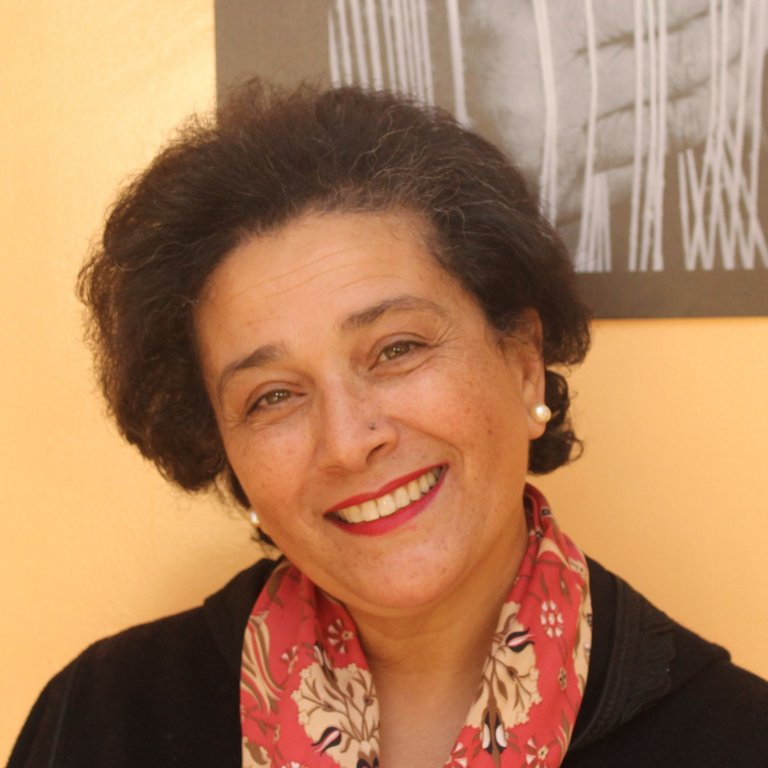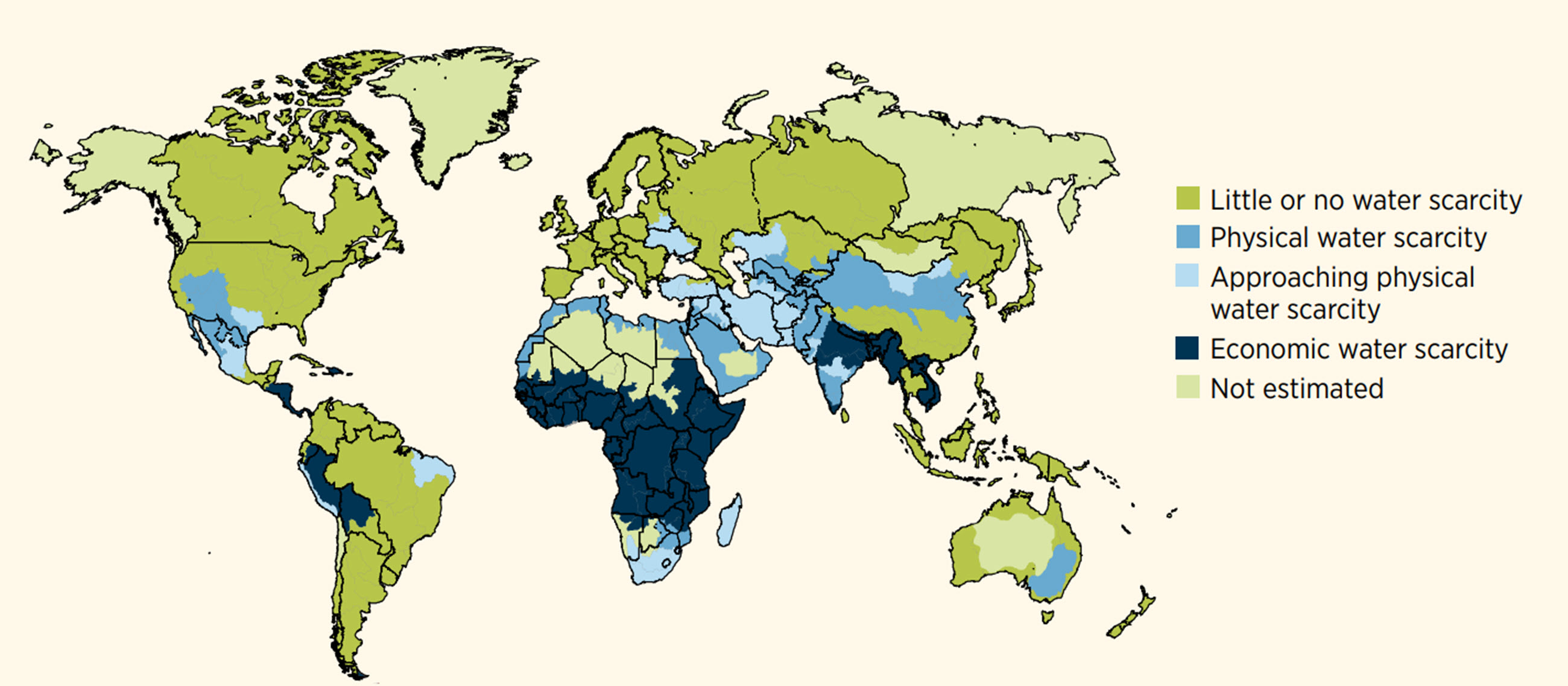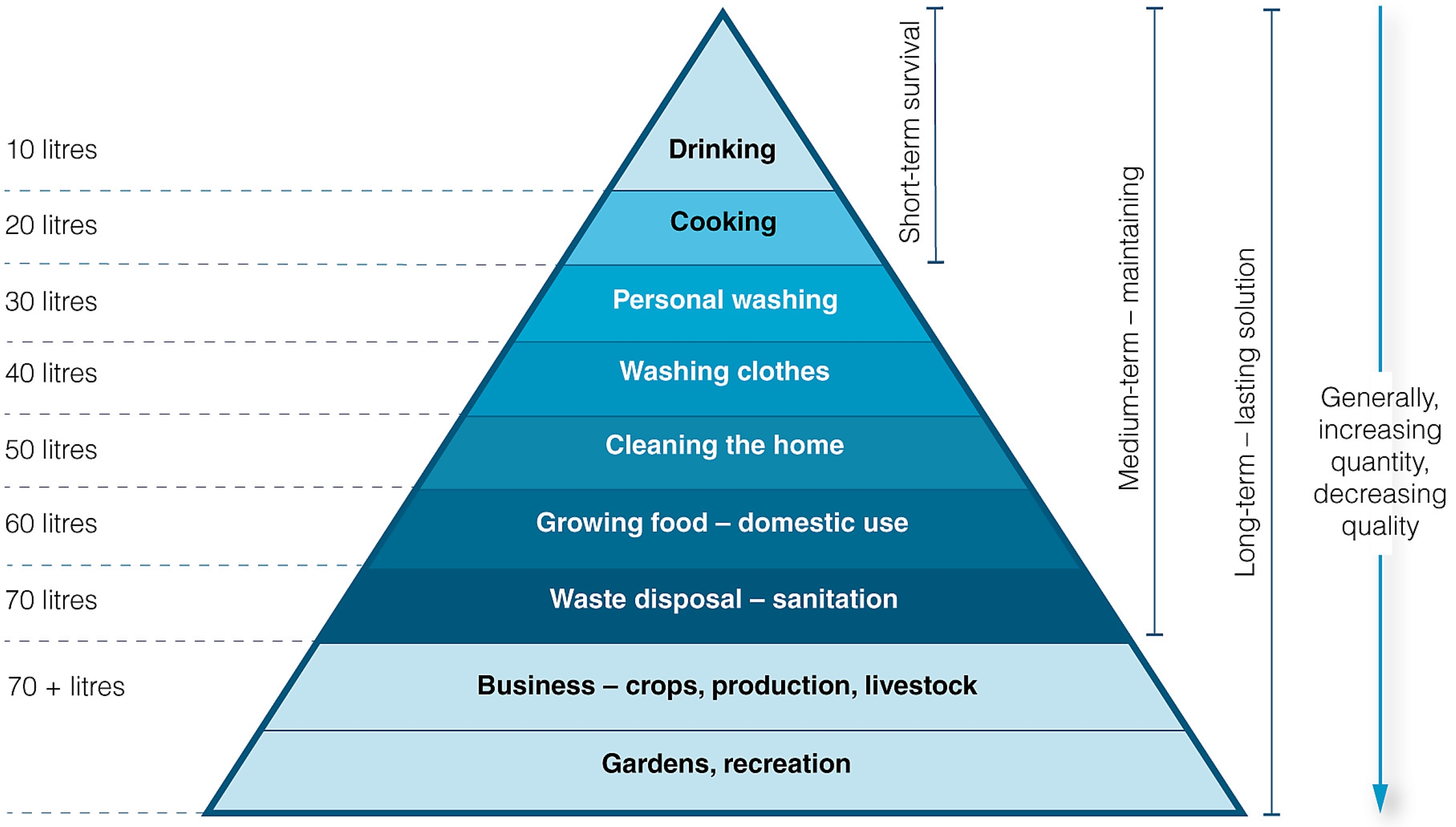
FogNet Alliance - Learning Sessions 2021
properties.trackTitle
properties.trackSubtitle
Fog nets: Every drop counts
Access to clean water is a human right. However, climate change is likely to make this access even more difficult for many people. At the FogNet Learning Sessions 2021, experts explored where and how fog nets can contribute to water supply.
The world is under water stress. Over the past two decades, the number of people with sufficient access to clean water has continued to decline. By 2025, half of the world's population is expected to suffer from water shortages. “Women and girls bear the brunt of the burden, spending a total of 200 million hours every day around the world to provide their families with sufficient water,” Monica Denomy, Senior Project Manager at the Water Foundation, pointed out. The situation is aggravated by climate change, which interrupts the natural water cycle in some regions, as Prof. Martin Grambow from the Bavarian State Ministry for the Environment and Consumer Protection explained. He called for more awareness of the problem from politicians and scientists and sees fog nets as an important piece of the puzzle to improve the global water supply. The event therefore aims to be a platform for the exchange of experience and knowledge as well as a catalyst for the further development of fog net technology, underlined Angelika Sturny, Project Manager at the Munich Re Foundation.
Where water is scarce
Source: WWAP (World Water Assessment Programme). 2012. The United Nations World Water Development Report 4: Managing Water under Uncertainty and Risk. Paris, UNESCO
Unconventional water sources in focus
The advantage of fog collectors: Unlike other unconventional water sources such as desalination plants or treated wastewater, they are inexpensive and can be installed without much technological effort, as well as being easy to maintain. And because women and girls in particular are relieved of the burden of fetching water, fog nets also contribute to gender equality, says Jamilia Bargach, director of the Moroccan non-governmental organisation Dar Si Hmad. However, according to Manzoor Qadir of the Institute for Water at the United Nations University, unconventional water sources receive too little attention in water policy and limited political support even where they have high potential. That is why the UN Water Task Force has initiated international and regional cooperation among UN member states, involving water institutions, policy makers and experts. It aims to explore regional and global opportunities for unconventional water sources and remove obstacles. “The sticking point is not the technology, but reaching those who can influence individual projects,” says Manzoor Qadir.
Exactly where ideal locations for fog nets are located across the world has been well researched. “Wind, fog and the right drop size are crucial,” clarified Otto Klemm, Professor of Climatology at the University of Münster. These conditions are predominantly present in mountainous areas near coastal regions. However, with few exceptions, the number of foggy days and the intensity of fog are decreasing worldwide, with air quality and climate change being decisive factors, he said. “You have to take that into account if you want to install new fog networks in a region,” Klemm explained. “Before you get started, you have to start with an evaluation study at least a year before,” added Peter Trautwein, chairman of Aqualonis GmbH. This designer has contributed decisively to improving fog net technology and developed the so-called CloudFisher for the WaterFoundation. It combines high durability with efficient water harvesting and has proven its reliability for a long time. “If fog collectors are very susceptible to damage and require frequent repairs, people will stop doing maintenance work at some point,” the expert knows from experience.
The CloudFisher is used, for example, in Tanzania on a plateau at an altitude of around 2,000 metres about 250 kilometres southwest of Mount Kilimanjaro. Fog nets have been installed at a total of six locations with the support of the Munich Re Foundation. They supply primary and secondary schools with water for drinking, cooking, plants and cleaning. Previously, pupils had to spend hours laboriously fetching water, which meant that they lacked valuable time for learning.
How much water is needed
According to the World Health Organization (WHO), between 50 and 100 litres of water per person per day are needed to meet basic needs. Many people who do not have access to clean water have to make do with about 5 litres per day.
Source: Davey, Kay; Shaw, Rod (2019): A hierarchy of water requirements based on Maslows hierarchy of needs. Loughborough University. Figure. https://doi.org/10.17028/rd.lboro.8059565.v1
Integrated approach to water management
The nets made of three-dimensional textile fabric with a stable support grid of UV-resistant plastic are characterised by a long service life and can supply up to 1,000 litres of drinking water per night and collector. The water benefits the nearly 3,000 students and their families. The project follows an integrated approach that includes the construction of nets and cisterns as well as hygiene education and the construction of toilets and washing facilities. At the moment, Trautwein is concerned about the sharp rise in costs for raw materials such as steel and for transport, which makes it difficult to install more CloudFishers.
In the Bolivian Valle Cruceños, fog nets are integrated into a comprehensive system of water management, as project manager Teresa López de Armentia from the Spanish non-governmental organisation Zabalketa reported. This system includes, among other things, the promotion of more environmental awareness, the protection of water sources, a land use plan, the efficient use of water and training in water management. In addition to water supply, the focus is on reforestation with the help of fog nets, whereby the individual plantlings receive their own small nets for irrigation. Regarding success factors, López de Armentia has clear recommendations: “Pay attention to the balance between efficiency, simplicity and adaptation to the local context, involve local organisations, have a committed environmental policy and promote the participation of women in decision-making.” In addition, partnerships with local and international institutions should be sought and water committees should be formed in order to use the resource water more sparingly.
Do not raise false hopes
Chile also has a long and successful history with fog nets. “A crucial aspect is to consider water from fog nets as a recognised source within the public policy framework,” Pablo Osses, Associate Professor at the Department of Geography of the Pontifical Catholic University of Chile, pointed out. It is also important to choose the right places in order not to raise false hopes and to avoid disappointment. This could otherwise damage the acceptance of fog nets. In addition, one must pay attention to easy maintenance of the fog collectors and ensure that spare parts are readily available. “It is better to proceed slowly step by step and take the local people with you. They have to feel that it is their technology,” added López de Armentia.
“At the height of the COVID-19 pandemic, when many people returned from the cities to their home villages in Morocco's Anti-Atlas Mountains, we had to buy water at times to ensure supplies,” explained Jamila Bargach from Dar Si Hmad. This was because May, June, July and August 2020 proved to be extremely low in fog at Mount Boutmezguida , where one of the largest fog nets in the world has been located for years. But away from this exceptional situation, the fog nets have managed to cover 30% of the population of the Tnine Amellou district.

Fog net technology has created an oasis of opportunity, a horizon of what can be achieved with local resources. It has linked issues of climate change, drought, migration and livelihoods and made their interconnections clear.
Climate change could influence fog formation
“Of course, fog nets cannot solve the global water problem,” Annette Menzel, professor of Ecoclimatology at the Technical University of Munich, pointed out. But they can trigger regional improvements in areas with semi-arid climates, where every drop counts. After all, under favourable conditions, up to 20 litres of water can be harvested per square metre of net area per day with a standard collector, and many times that amount with special nets. However, one has to keep an eye on how climate change affects fog formation in certain regions.
“Fog nets are a contribution to counteracting the causes of forced migration brought on by climate change. It gives people more security in their livelihoods so that they can continue to live in their ancestral places instead of migrating to other regions,” Trautwein is convinced and added: “For me as a developer, it is always a joy when I see local people taking responsibility and my help is no longer needed. That is the key to success.”
“The learning sessions showed that fog nets are an additional water resource with as yet untapped potential, especially in dry areas. However, for further dissemination of the technology, costs must be reduced and the effects of climate change on fog occurrence must be better understood. Access to knowledge about construction and maintenance must also be made easier,” Dirk Reinhard, Vice Chairman of the Munich Re Foundation, summarised at the event.
Agenda
Thursday, 7 October 2021
Time below refers to CEST / UTC+2
Session 1 - 14:00 - 15:30 / Opening and introduction to the topic
Welcome
Dirk Reinhard
Vice Chair, Munich Re Foundation, Germany
Monica Denomy
Senior Project Manager, WaterFoundation, Germany
Setting the scene
Martin Grambow
Secretary of Water Management and Soil Protection, Bavarian State Ministry of the Environment and Consumer Protection, Germany
Keynote
Manzoor Qadir
Assistant Director, United Nations University, Institute for Water, Environment & Health (UNU-INWEH), Canada
Introduction to the topic
Otto Klemm
Professor for Climatology, University of Münster, Germany
Peter Trautwein
CEO, Aqualonis GmbH, Germany
Facilitator
Dirk Reinhard
Vice Chair, Munich Re Foundation, Germany
Session 2 - 16:00 - 17:30 / Lessons and experience from the field
Speakers
Peter Trautwein
CEO, Aqualonis GmbH, Germany
Teresa López de Armentia
Project Manager, Zabalketa, Spain
Pablo Osses
Associate Professor at the Geography Institut at the Pontifical Catholic University of Chile, Santiago, Chile
Jamila Bargach
Director, Dar Si Hmad, Morocco
Facilitator
Dirk Reinhard
Vice Chair, Munich Re Foundation, Germany
Session 3 - 18:00 - 19:30 / Scaling new projects / Finance and governance
Speakers
Annette Menzel
Professor for Ecoclimatology, Technical University of Munich, School of Life Sciences, Germany
Christian Wiebe
Divisional Manager, Viva con Agua Water GmbH, Germany
Open forum: Q&A with speakers and participants
Facilitators
Otto Klemm
Professor for Climatology, University of Münster, Germany
Angelika Sturny
Project Manager, Munich Re Foundation, Germany
Download presentations

Further information on fog nets
About the event
The FogNet Learning Sessions 2021 were organised by the FogNet Alliance – a cooperation between the Munich Re Foundation and the Water Foundation. Organisations from all over the world shared their experiences on fog net projects from Bolivia, Chile, Eritrea, Morocco, Spain and Tanzania. Experts from five countries were invited to share their knowledge on fog net technologies.
7 October 2021




